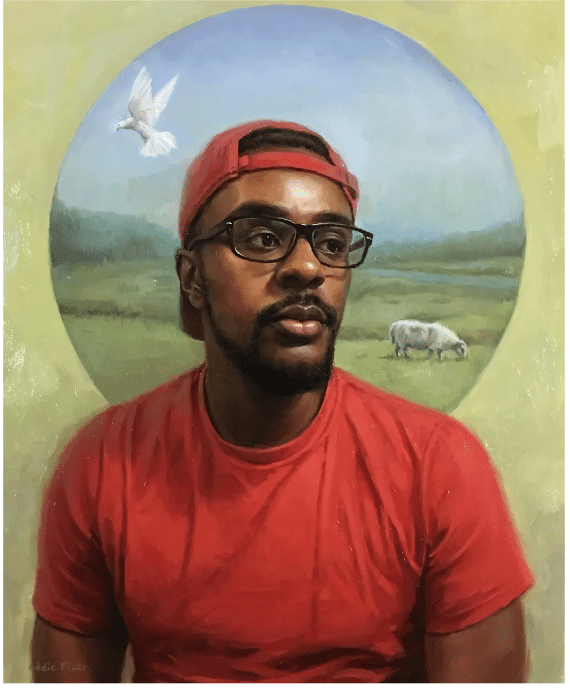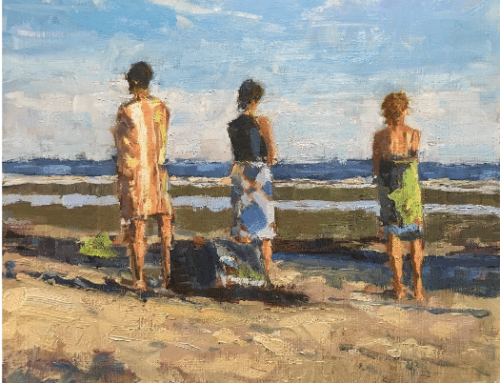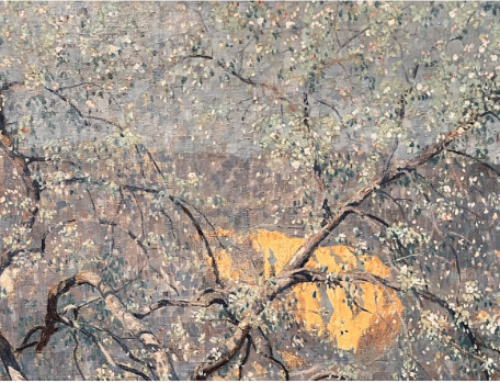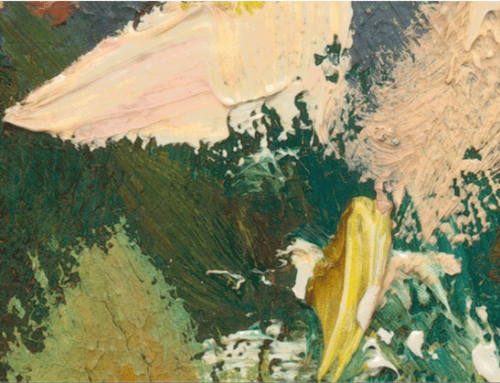1. LISTEN TO THE PAINT Maintain a dialogue with your painting. Many artists begin with a precise underpainting and proceed carefully and accurately apace, and many do not. Some painters have a definite endpoint in mind but remain “open to suggestion.” That is, but if a painting doesn’t go the way they wanted it to, they don’t force it. Instead, they try some experiments, move some paint around, and ask what the current state of things suggests about what might happen next.
Oil paintings are infinitely changeable, and creativity is ultimately a mysterious thing. There are many ways to begin a painting and as many ways to finish one as there are painters to mix a color and move a brush.
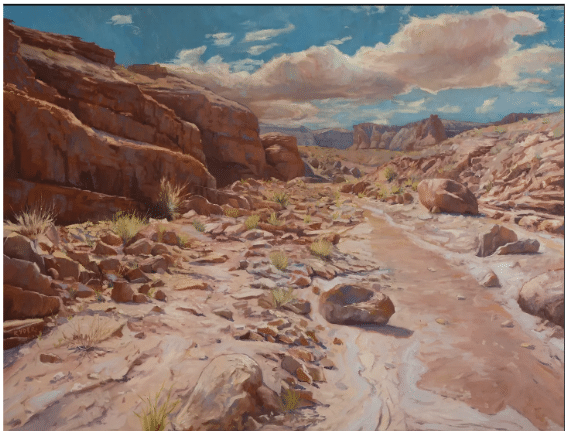
Matt Ryder, Blazing Trail, oil, 36” x 47” Matt teaches his methods in his video Painting Rocks and Sunlight.
2. Challenge yourself not to automatically go with your first impulse. Before you do at it, if you’re about to paint a barn or a tree, for example, walk all the way around it first; step back and zoom in close and wait for something to “hit” you. See if you can find an exciting perspective challenge or an unusual composition choice.
The first composition you see is likely to be in your comfort zone, but it is your second choice that will stretch your capabilities and expose new creativity. If you really want to be radical and shake things up, try turning away from the obvious motif and search out something you haven’t seen anyone paint before.
Sometimes it’ll just click. Something jumps out at you and suddenly you can imagine the general outline of the finished piece, even though you have no idea how to even start – and that’s your painting.
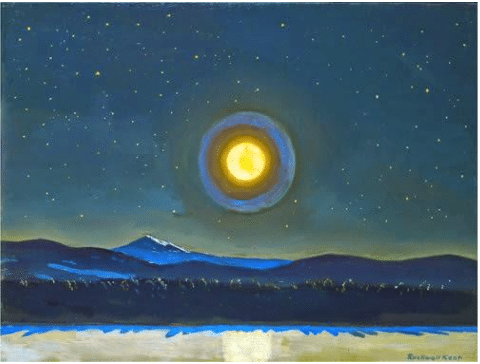
Rockwell Kent, Moonlight in the Adirondacks.
3. Sit at the feet of the masters. Find paintings that humble and excite you, that make your head explode, that make you say “Yes – THAT’S painting.” Don’t copy them – instead, see if you can isolate the specific qualities (light, color, brushwork, degree of realism, overall feeling) in them that you’re responding to. They don’t have to be by dead people (though some of them probably should be). Just let yourself be blown away by what an artist you’ve encountered has achieved.
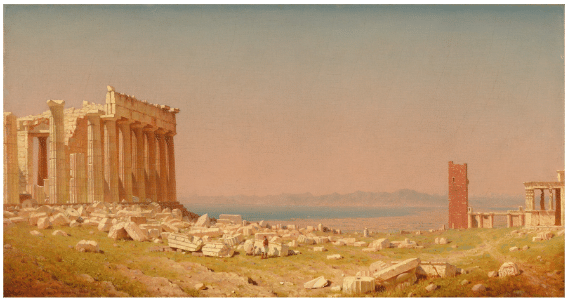
Sanford Robinson Gifford, Ruins of the Parthenon, oil on canvas, 27 3/8 × 52 1/4 in. (1880)
Why do this? Because your feeling for art in general will help you invest your own paintings with feeling in subtle but highly important ways.
This isn’t about asking, “how?” Just feel it. Take it in. Look long. “Listen” to the painting, in part and in whole. See what someone has done, intuit their dialogue with the work and the decisions they made (and more importantly, rejected). Give yourself permission to look not just with your eyes but with your emotions, take a deep breath, and remember how it makes you feel. Implicitly understand the “why” – the only answer to which you need to know is: “Because Damn – that’s PAINTING.”
The Top 100 Picks in the Latest Salon
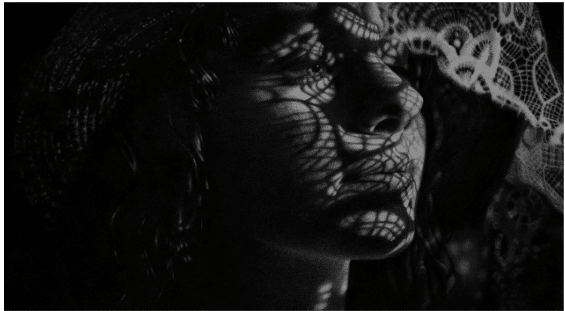
Asha Bronicki, The Innocent One, pencil and charcoal 12 x 24, March 2024 drawing top 100
Each month a team of judges spends hours reviewing and scoring every painting that gets entered into the PleinAir Salon competition. For the month of March that was a record 1,080 paintings.
Through a blind-judging system, our judges score the paintings based on criteria such as composition, use of color, brush-handling, overall execution, etc.
The paintings with the highest scores become the Top 100 Finalists, and the scores are in for the March Competition.
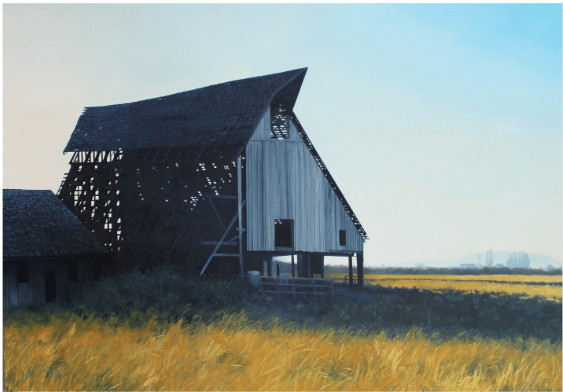
Andy Eccleshall, Icon, oil, 48 x 72, March 2024 Salon landscape top 100
To view all the 100 Finalists, have a peek over here.
Congratulations to our finalists, thank you to everyone who entered, and a big thank you to our latest judge, artist T. Allen Lawson.
The PleinAir Salon Art Competition was created by PleinAir magazine publisher Eric Rhoads. In the spirit of the French Salon created by the Academie des Beaux-Arts in Paris, this annual online competition, with 12 monthly cycles, leading to the annual PleinAir Salon Art Competition, is designed to stimulate artistic growth through competition. The competition rewards artists with $50,000 in all cash prizes each year, and exposure of their work, with the winning painting featured on the cover of PleinAir magazine.
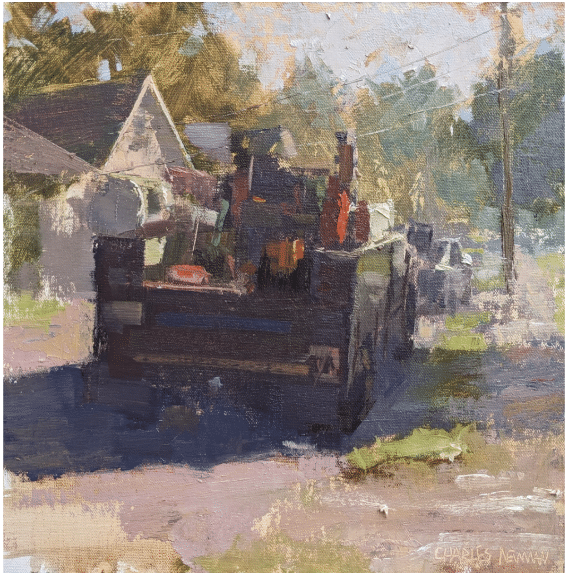
Charles Newman, Utility Truck, oil, 10 x 10 in., March 2024 Salon Vehicle top 100
Winners in each monthly competition receive recognition and exposure through PleinAir magazine’s print magazine, e-newsletters, websites, and social media. Winners of each competition will also be entered into the annual competition.

